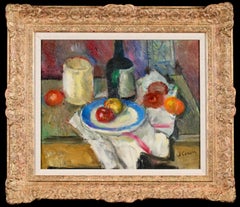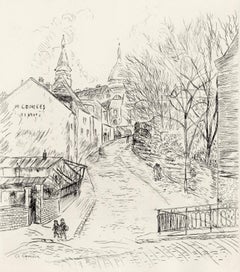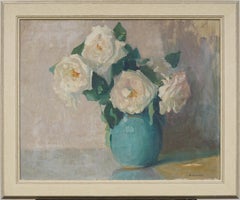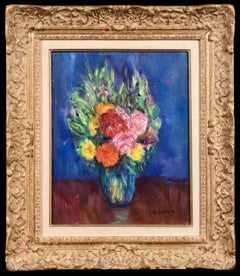Charles Camoin Art
Charles Camoin was a French Expressionist landscape painter associated with the Fauves. He painted a portrait of Matisse, which is in the permanent collection of the Pompidou Museum in Paris. Born in Marseille, France, on September 23, 1879, Camoin met Henri Matisse in Gustave Moreau's class at the École des Beaux-Arts in Paris. Matisse and his friends, including Camoin, Henri Manguin, Albert Marquet, Georges Rouault, André Derain and Maurice de Vlaminck, formed the original group of artists labeled the Fauves for their wild, Expressionist-like use of color. Camoin always remained close to Matisse. Camoin's works have been widely shown in France and are in such major collections as the Musée d'Art Moderne de la Ville de Paris in addition to the Centre Georges Pompidou and many of the French regional museums. In 1955, he was awarded the Prix du President de la Republique at the Biennale of Menton. He died in Paris on May 20, 1965.
1950s Impressionist Charles Camoin Art
Canvas, Oil
1940s Post-Impressionist Charles Camoin Art
Lithograph
Late 20th Century Modern Charles Camoin Art
Lithograph
1940s Post-Impressionist Charles Camoin Art
Lithograph
1930s Modern Charles Camoin Art
Etching
Late 20th Century Modern Charles Camoin Art
Etching
Late 20th Century Modern Charles Camoin Art
Lithograph
Late 20th Century Modern Charles Camoin Art
Lithograph
Mid-20th Century Post-Impressionist Charles Camoin Art
Oil
1940s Post-Impressionist Charles Camoin Art
Lithograph
1940s Modern Charles Camoin Art
Etching
Late 20th Century Modern Charles Camoin Art
Lithograph
1940s Modern Charles Camoin Art
Etching
Late 19th Century Post-Impressionist Charles Camoin Art
Lithograph
1920s Impressionist Charles Camoin Art
Canvas, Oil
1910s Post-Impressionist Charles Camoin Art
Lithograph
2010s American Impressionist Charles Camoin Art
Gold Leaf
1930s Impressionist Charles Camoin Art
Canvas, Oil
1990s Post-Impressionist Charles Camoin Art
Lithograph
1980s Modern Charles Camoin Art
Lithograph
1970s Modern Charles Camoin Art
Etching
Early 2000s Fauvist Charles Camoin Art
Handmade Paper, Lithograph
1970s Modern Charles Camoin Art
Lithograph
1990s Fauvist Charles Camoin Art
Lithograph
Early 2000s American Impressionist Charles Camoin Art
Canvas, Oil, Board
1940s Impressionist Charles Camoin Art
Canvas, Oil
1930s Charles Camoin Art
Etching
1920s Impressionist Charles Camoin Art
Oil, Canvas
1940s Post-Impressionist Charles Camoin Art
Lithograph
1940s Post-Impressionist Charles Camoin Art
Lithograph
Late 20th Century Modern Charles Camoin Art
Lithograph
Late 20th Century Modern Charles Camoin Art
Lithograph
1940s Post-Impressionist Charles Camoin Art
Lithograph
1940s Post-Impressionist Charles Camoin Art
Lithograph
1930s Charles Camoin Art
Oil, Wood Panel
Early 20th Century Expressionist Charles Camoin Art
Paper, Pastel
Early 20th Century Modern Charles Camoin Art
Canvas, Oil





